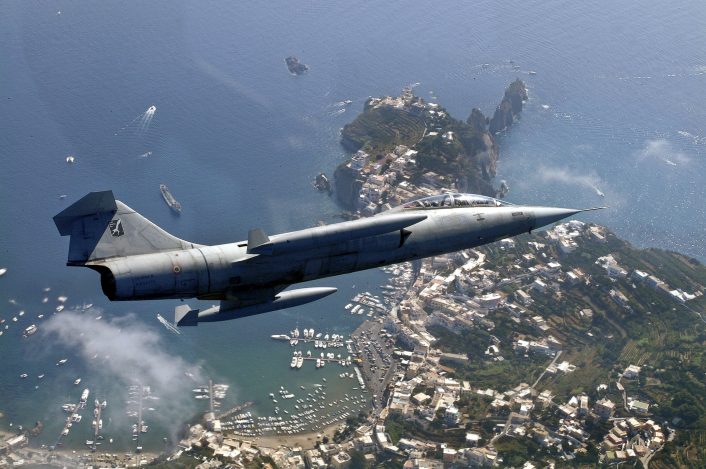The final chapter in the operational career of the legendary F-104 unfolded at Grazzanise Air Base on Oct. 31, 2004.
Of the 15 nations that operated one of the 2,580 Lockheed F-104 Starfighters produced (including prototypes), Italy is uniquely distinguished for its deep connection to this remarkable interceptor. Over nearly five decades, the F-104, affectionately known as the “Spillone” (“Hatpin”), or Ziper, was more than just a fighter jet; it became a significant element of the daily operations of the Aeronautica Militare (Italian Air Force, ItAF). Its influence extended beyond mere functionality, shaping the ambitions, strategic choices, and operational capabilities of the Italian military.
Throughout its tenure, the ItAF utilized seven different versions of the F-104: the F-104G, RF-104G, TF-104G, F-104S, F-104S/ASA, F-104S/ASA-M, and TF-104G-M. These variants served across ten Wings and fifteen Squadrons, including the prestigious Reparto Sperimentale Volo, accumulating just under one million flight hours. The F-104’s versatility allowed it to perform not only as an interceptor but also in ground attack (both conventional and strike) and tactical reconnaissance roles, cementing its status as a multifaceted asset in the Italian Air Force.
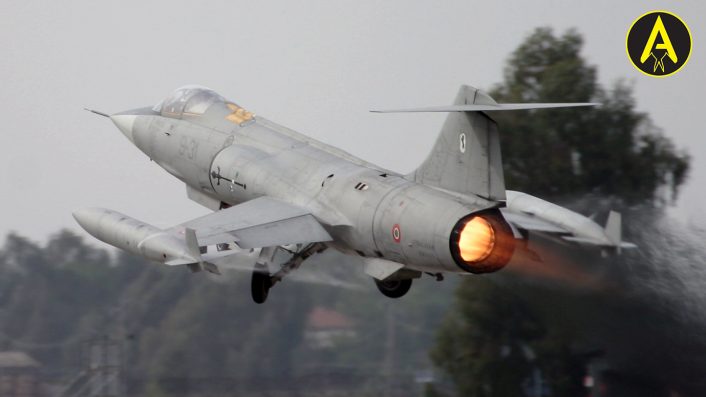
The last year
The F-104 was retired from operational use by the ItAF in 2004.
Following the International Meeting, a great farewell airshow held at Pratica di Mare airbase on May 30, the TF-104s made their final deployment to Decimomannu from June 1 to June 4. A few weeks later, on June 19 and 20, Grazzanise hosted the traditional “Raduno delle Picche” (the Reunion of the X Gruppo), marking the last event for the F-104s at that base as the 10th Squadron prepared to relocate to Trapani. In keeping with tradition, six aircraft formed the shapes of the “Picca” and the “X” (the Roman numeral for 10°) in the sky.
Since only five pilots remained at Grazzanise, a pilot from the 18° joined the formation, symbolizing the strong connection between the two Air Defense units. On Sept. 23, the finiflight of the last three pilots from the 18° Gruppo, who had temporarily been stationed at Grazzanise to assist the 9° Stormo, took place. The three officers concluded their tenure with the “Spillone” by flying in formation with the Frecce Tricolori, who had made a fuel stop in Grazzanise en route to Malta.
On Oct. 13, 2004, the official farewell ceremony for the F-104 was held at Grosseto airbase. A formation of two new Typhoons and four Starfighters (MM54253/4-20, MM54258/4-40, MM54260/4-41, and MM6890/4-50) flew over “Baccarini” airport, where the first F-104G had landed more than 40 years prior. The 4° Stormo in Grosseto was the operational unit with the most extensive F-104 experience globally. Just days before the official phase-out of the fleet, scheduled for October 31, the remaining aircraft in Grosseto were transferred to Grazzanise on October 21. Only two dual-seat models remained in Tuscany: the TF-104G/M MM54251/4-34 and MM54260/4-41, which were assigned to the RSV before being moved to Pratica on March 11, 2005, after passing a 200-hour inspection at the 4° RMV.
Last QRA and operational mission
The F-104 marked the conclusion of its remarkable career within the Aeronautica Militare on Oct. 30, 2004, when it executed its final Quick Reaction Alert (QRA) shift after being on standby, “ready in five,” for 40 years. This 24-hour shift wrapped up on October 31 at 08:25 local time, with a Tango Scramble (a training scramble) conducted by Maj. Aurelio Covotta, the 10° Gruppo commander, and Lt. Rolando Pellegrini from the 9° Gruppo.
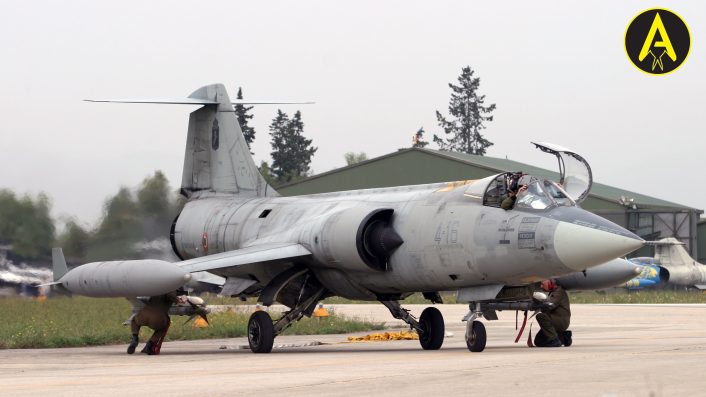
Following the landing of the two armed aircraft, a tribute to this iconic aircraft in the recent history of the Italian Air Force was performed by a distinguished formation. This included Gen. Pietro Valente, commander of the “Aquila” Division; Col. Vittorio Iannotta, commander of the 4° Stormo; Col. Gianpaolo Miniscalco, commander of the 9° Stormo; Maj. Giovanni Balestri, commander of the 20° Gruppo; and Gen. Settimo Caputo, Deputy Chief of Staff of Comando Squadra Aerea, who proudly wore the patch symbolizing 3,500 flying hours on the Starfighter. The aircraft (MM6890/4-50, MM6934/9-31, MM6930/9-99, MM6876/9-39, and MM6850/4-16) took off in rapid succession and performed a series of fly-bys that were met with deep emotion and a touch of sadness from the staff of the 9° Stormo and onlookers along the taxiways of the operational area of the 10° Gruppo.
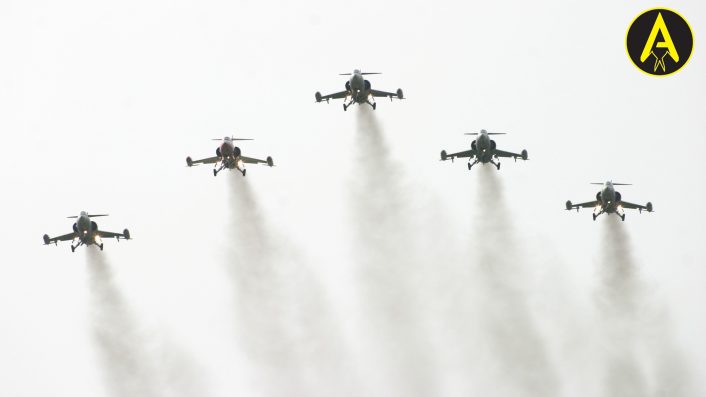
After completing the last fly-by, the aircraft landed, except for one: the 9-99 of Col. Miniscalco, who executed a series of maneuvers before making a final pass at transonic speed, culminating in a vertical climb that signified the official end of the F-104’s long-standing presence in the frontline units of the Aeronautica Militare.
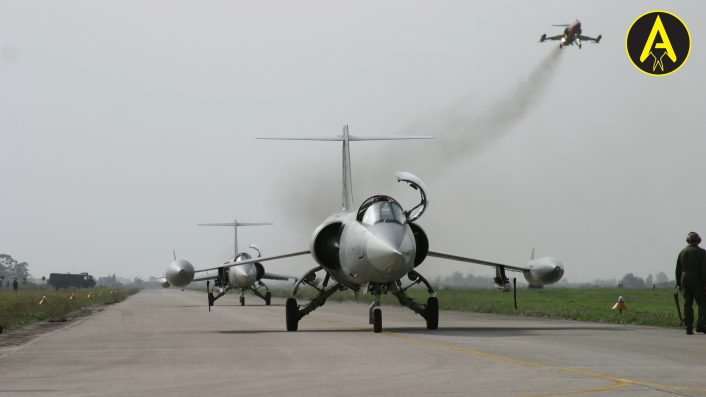
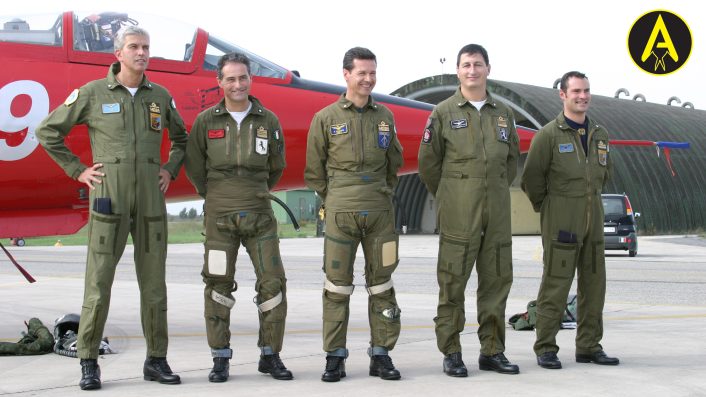
The very last flight
Following October 31, 2004, the Starfighter continued to operate in Italian airspace for just under a year. The final farewell to the “Chiodo” was postponed slightly. Despite being devoid of any operational effectiveness, the aircraft’s speed characteristics still had utility for the Italian Air Force, which assigned several examples to the Reparto Sperimentale Volo.
In early 2005, five aircraft were occasionally utilized by test pilots from the 311° Gruppo at Pratica di Mare as chase planes during missions focused on evaluating other weapon systems: three F-104S/ASA-Ms (MM6762/RS-06; MM6876/RS-05; and MM6734/9-30 RS-06) and two TF-104G-Ms (the previously mentioned MM54251 and 54260, designated RS-09 and RS-08, respectively). On May 2, 2005, the MM6762/RS-06 was retired, and less than three months later, the moment arrived for the unavoidable last flight of an Italian F-104.
On July 27, 2005, at Pratica di Mare, the aircraft MM54260/RS-08 took to the skies. In the front seat was Col. Eugenio Lupinacci, commander of the Reparto Sperimentale Volo, while a distinguished passenger occupied the rear seat: Adm. Giampaolo Di Paola, the Chief of Defence Staff. The flight lasted one hour, navigating through the CTR of Latina and Grazzanise before returning to base, marking the end of the Starfighter’s career. This final farewell occurred quietly, away from the limelight, as if the Aeronautica, which had celebrated the 50th anniversary of the first F-104 flight with an International Meeting the previous year, wished to bid farewell to its most significant aircraft without pomp, embracing a sobriety characteristic of a routine mission.
